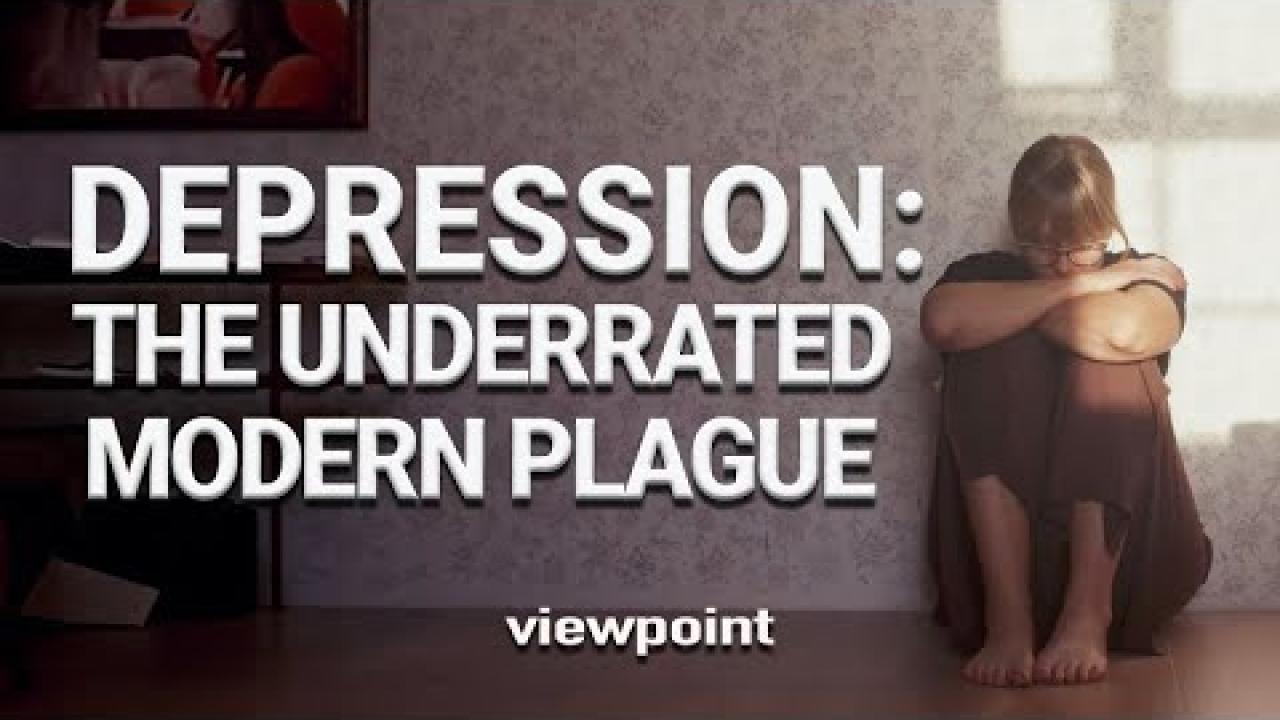
Depression: The Underrated Modern Plague
Great plagues have ravaged populations throughout man's history. These plagues afflict rich and poor alike--they do not discriminate. One study set the cost of depression and anxiety to Canada at nearly $50 billion annually. The same report indicated as many as one in four Canadians unable to work due to their symptoms. Depression serves as an underreported and underrated plague upon modern society. How has this come to be?
Great plagues have ravaged populations throughout man's history. Everyone, for instance, has heard of the Black Death, which eliminated nearly half the population of Europe in the 14th century. Rich and poor fell to the disease—it made no distinction between classes. So significant was the impact of this plague that the entire social structure of England and of many other countries was shattered.
Few are unaware of the social disruption and economic and even political turmoil wrought by the terrible Black Death of the Middle Ages, or more recently the COVID-19 virus. A tiny and unseen bit of genetic code had the power to bring the global economic engine to a near halt, leaving a trail of economic and social chaos in its wake.
Yet as you hear these words, another plague is marauding in our midst, one that costs our economy billions of dollars a year, and claims victims from skid row to the corporate boardroom.
Reporting for Global News in September 2016, Nicole Mortillaro indicated that a Conference Board of Canada study set the cost of depression and anxiety to Canada at nearly $50 billion annually. The same research concluded, "…that almost one-quarter of Canadians are unable to work due to their symptoms" (Nicole Mortillaro, "Anxiety and depression cost the Canadian economy almost $50 billion a year," Global News, September 2, 2016).
On a global scale the problem is even more dramatic. Reporter Andrew Russel commented on a Global News blog about a World Health Organization study that had been published in the medical journal The Lancet in April 2016. This study estimates the economic cost of anxiety and depression to be over $1 trillion annually.
The number of people in this age suffering from depression to the point of impeding their contribution to family and society is shocking, to say the least. In 2018, The Guardian reported on the magnitude of the problem:
At any one time it is estimated that more than 300 million people have depression – about 4 % of the world's population when the figures were published by the World Health Organization (WHO) in 2015…Depression is the leading global disability, and unipolar (as opposed to bipolar) depression is the 10th leading cause of early death, it calculates. The link between suicide, the second leading cause of death for young people aged 15-29, and depression is clear, and around the world two people kill themselves every minute [emphasis added] (Juliette Jowit, "What is depression and why is it rising?," The Guardian, June 4, 2018).
The article also noted an interesting fact, that rates of depression are inconsistent between nations:
While rates for depression and other common mental health conditions vary considerably, the US is the "most depressed" country in the world, followed closely by Columbia, Ukraine, the Netherlands and France. At the other end of the scale are Japan, Nigeria and China (The Guardian).
In general, research suggests that depression, as a clinical problem, is far more prevalent in Western cultures, especially in nations such as the US, Canada, France, Germany and New Zealand, than it is in the cultures of the Orient 5 (Brock Bastian, "So many in the West are depressed because they're expected not to be," The Conversation, August 1, 2017).
While suffering from depression is not new to the human experience, the extent of the problem has increased drastically in the past two decades, and for the first time since records have been kept, it appears to be the endemic challenge of the 21st century.
The true depth of the problem is perhaps more fully described in a study by Dr. Ronald Kessler, published in 2011, and available on the website of the National Center for Biotechnology Information. The study is entitled: The Costs of Depression. Here Dr. Kessler states:
The World Health Organization ranks major depressive disorder (MDD) as the 4th leading cause of disability worldwide and projects that by 2020 it will be the second leading cause due to currently unexplained increasing prevalence in recent cohorts6 (Ronald Kessler, "The Costs of Depression", Harvard Medical School, NCBI, December 16, 2011).
Dr. Kessler goes on to explain how the study linked serious depression to issues that impact economic development such as: early termination of education, reduced incidence of successful marriage, teen child-bearing, and reduced potential in employment. This has the overall effect of eroding the individual's capacity to contribute to the economy and to personal economic stability.
Personal health, Kessler states, can also be impacted from long-term depression, and shows links between depression and a variety of disorders from arthritis to cancer, hearts disease and diabetes.
One would think that with universal public education, during the most prosperous period in human history, and for the last 70 years free from the direct effects of conflict, the Western world would be seeing a decline in serious cases of depression. Yet as we have seen, the opposite is the case
Clinical depression has numerous causes or triggers. In the next two chapters of the series we shall first examine biological contributors leading to depression, look at a number of non-biological contributors, and discuss some steps that may be taken to address these situations.